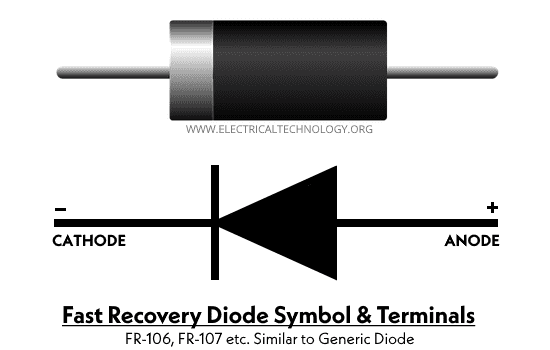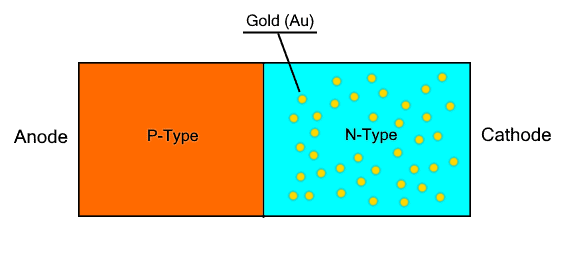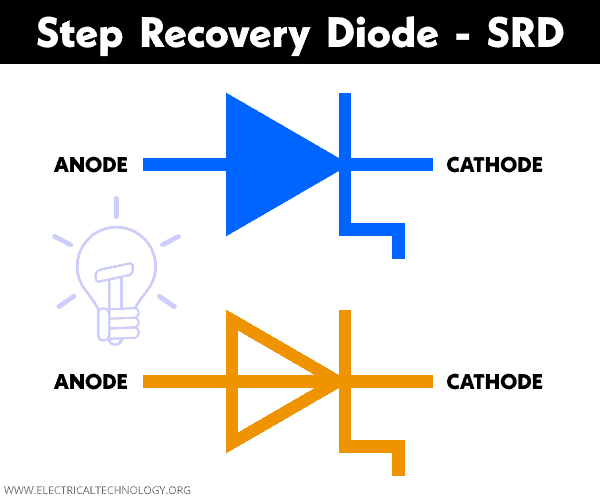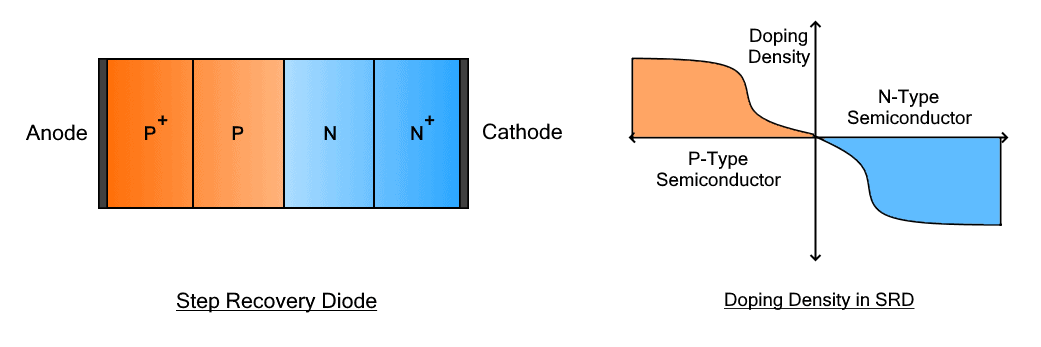Difference Between Fast Recovery Diode and Step Recovery Diode
Key Differences Between Step Recovery Diode and Fast Recovery Diode
In electrical and electronic engineering, the diode is the most widely used component. It is a semiconductor-based component used for switching and protection. There are several types of diodes. Fast recovery diodes and step recovery diodes are two different types of diodes used for their high switching speed in high-frequency applications. Apart from high switching speed, there are several other differences between them.
Before going into the list of differences between fast recovery diode and step recovery diode, let’s look into their basics first.
- Related Post: Between Schottky Diode and Fast Recovery Diode
Fast Recovery Diode
A fast recovery diode or FRD is a PN junction diode that has a very fast reverse recovery time. It is also known as a fast diode or fast switching diode. It achieves a fast recovery time by adding gold as recombination centers. During conduction, charge carriers flow to the opposite side of the PN junction, which requires time to flow back to its side.
During this time, the diode conducts and cannot block current flow. The recombination center placed in-between helps recombine the electron and hole to turn the depletion region and block current flow. Thus reducing the reverse recovery time significantly.
Related Posts:
- Difference between Photodiode and Photoresistor (LDR)
- Difference Between Photodiode and Phototransistor
Step Recovery Time
Step recovery diode or SRD is a type of PN junction diode with a very unusual doping pattern to provide a very fast switching speed. It is also used for high-frequency applications. It is also known as a charge storage diode or voltage-dependent variable capacitor.
It achieves its fast switching using the stored charge in its junction. It has a lower doping concentration as compared to a normal PN junction diode. However, Its doping concentration is maintained in such a way that it decreases near the junction. Therefore the charge carriers are minimum near the junction.
It increases the junction capacitance to store a huge amount of charge which allows current flow when the voltage suddenly reverses for a short duration. However, the junction is quickly drained of charge carriers since they are minimum near it. The reverse current suddenly stops as if the diode snaps open. Therefore it is called a snap-off diode. This is how it provides a fast switching speed.
Related Posts:
Main Differences between Fast Recovery Diode and Step Recovery Diode
The following table shows the comparisons between Fast Recoveree and Step Recovery Diodes.
| Fast Recovery Diode | Step Recovery Diode |
| It is a PN junction diode with the addition of recombination centers to reduce its recovery time. | It is a PN junction diode with decreasing doping concentration towards the junction to reduce charge carriers thus reversing recovery time. |
| It uses recombination centers such as gold to recombine electron-hole pairs after voltage reversal. | It uses lower doping concentration to reduce the charge carriers near the junction in order to quickly snap open the diode. |
| It has a relatively longer reverse recovery time. | It has a relatively smaller reverse recovery time. |
| It has a lower switching speed as compared to SRD. | It has a higher switching speed. |
| Its operating frequency ranges between a few kHz and MHz. | Its operating frequency ranges between a few MHz to GHz. |
| It can handle high voltages up to 1000v | It can only handle low voltages up to 100v. |
| forward voltage drop is large | Forward voltage drop is low. |
| Large power and heat is dissipated at the diode. | Less power and heat dissipation at the diode. |
| It has a lower efficiency | It has higher efficiency. |
| There is less noise generation | SRD unique switching generates noise in the system |
| It is cheaper and cost efficient | It is expensive. |
Related Posts:
Comparison Between SRD and Fast Recovery Diode
Function
- The function of a fast recovery diode is to provide a small reverse recovery time. It is the time taken between on state and off state. It is used to reduce energy losses in SMPs, Inverters and high-frequency applications.
- The function of the step recovery diode is to provide stored charge to generate abrupt voltage transition. It releases the stored charge to achieve a fast switching speed. It is used in pulse generators, phase detectors and frequency multipliers.
Construction
- FRDs are designed by adding recombination centers such as gold into the semiconductor.
- SRDs are designed by varying the doping concentration throughout the diode in such a way that it decreases near the junction.
Working Principle
- The working principle of FRD is based on the addition of a recombination center near the junction. That quickly recombines the electron-hole pairs to quickly block the reverse current.
- In SRD, the unusual doping concentration is used where it gradually decreases near the junction. It allows it to have fewer charge carriers as well as large junction capacitance. It stores a large amount of charge in the conduction state that is suddenly released in reverse bias to block the current flow.
Reverse Recovery Time
- FRD is designed to have a very small reverse recovery time using the recombination centers. It is very smaller than a conventional diode but relatively longer than the step recovery diode. Its reverse recovery time is in the range of tens to hundreds of nanoseconds.
- SRDs are designed to quickly snap open using the stored charge in its junction. Its reverse recovery time is the fastest of all diodes and it is in the range of tens of picoseconds
Frequency
- FRD is used in high-frequency applications due to its high speed. However, its frequency range is between a few hundred kilohertz up to several megahertz. It has a lower frequency range than SRD.
- The SRD has a very high operating frequency in the range between hundreds of megahertz and few gigahertz. However, its performance decreases with an increase in frequency.
Voltage
- Both of them diodes are designed for different voltage ratings. However, FRD can handle very high voltages up to 1000v. Therefore it is used for high-frequency rectification.
- SRD can handle low voltages up to 100v Max. Therefore they are used in very high frequencies such as microwave and RF applications.
Forward Voltage Drop
- FRD has a high forward voltage drop which also leads to large power and heat dissipation at the diode.
- SRDs have a very low forward voltage drop which increases its efficiency.
Heat Dissipation
- FRDs have a higher heat dissipation due to the high voltage drop and lower reverse recovery time. It requires adequate heat sinks for efficient performance.
- SRDs on the other hand have a very low forward voltage drop which generates less heat making them more efficient
Noise Generation
- FRD possesses low noise characteristics as it has fast switching with lower reverse recovery time.
- SRD has high noise generation due to its unique switching that generates sudden rise and fall in voltage and current waveform.
Cost
- FRD is inexpensive and cost-efficient. It is readily available in the market.
- SRD is used for special applications in RF and microwave applications since they are more costly.
Applications
- FRDs are specially used for high-frequency rectification and power conversion since they can handle large voltages and are cost-efficient. Examples are inverters, power supplies, SMPS, etc.
- SRD due to their very high speed and low voltage ratings is used for low-power microwave and RF applications. Examples are pulse generation, frequency multipliers, and time-delay circuits.
We can conclude that both fast recovery diode and step recovery diode possess high switching speeds but FRD is used for high-power, moderate to high-frequency applications in power converters. Whereas SRD is used for low-power, very high-frequency applications.
Related posts compare and contrast various electrical and electronic components and devices.
- Difference between LED and Photodiode
- Difference Between LED and LDR
- Difference Between Phototransistor and Photoresistor (LDR)
- Difference Between JFET and MOSFET
- Difference Between BJT and FET Transistors
- Difference Between Diode and SCR (Thyristor)
- Difference Between Transistor & Thyristor (SCR)
- Difference Between Diode and Transistor
- Difference Between NPN and PNP Transistor
- Difference Between Voltage Source and Current Source
- Difference between Voltage Source Inverter & Current Source Inverter
- Difference between Inverter & UPS – Uninterruptible Power Supply
- Difference Between Inverting and Non-Inverting Amplifier
- Difference Between Amplifier and Operational Amplifier
- Difference Between Encoder and Decoder
- Difference Between Microprocessor and Microcontroller
- Difference Between 8085 & 8086 Microprocessor – Comparison
- Difference Between RAM and ROM – Comparison
- Difference Between CPU and GPU – Comparison
- Difference between Active and Passive Components
- Difference Between Multiplexer (MUX) & Demultiplexer (DEMUX)
- Difference Between Digital Latch and Flip-Flop Circuits
- Difference between Zener Diode and Avalanche Diode











